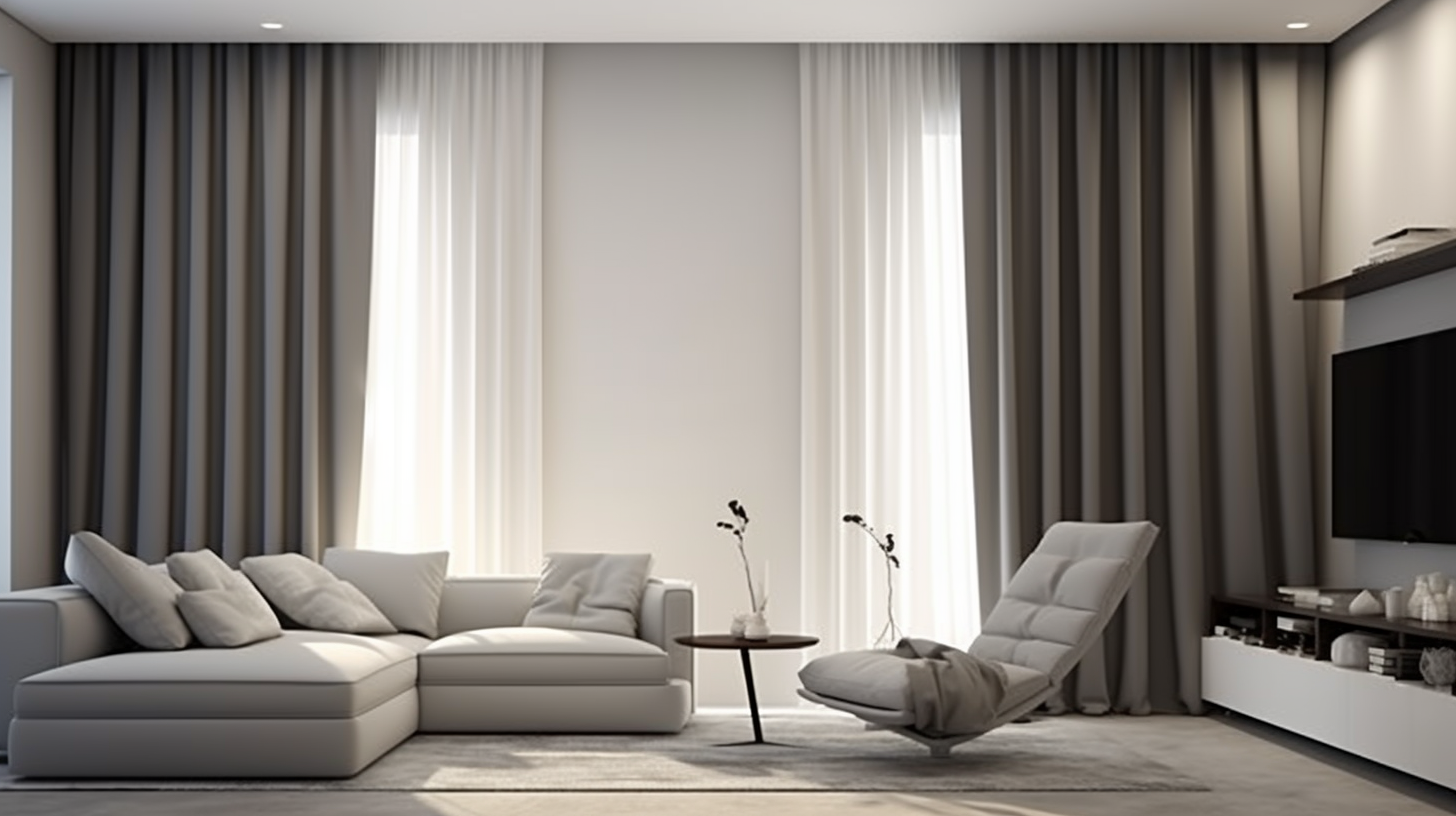Trying to reduce noise from the bustling world outside but not keen on the idea of soundproofing your windows? You’re likely asking yourself: Do soundproof curtains really work?
In this comprehensive guide, we’ll unpack the complexities of soundproof curtains. From their construction and effectiveness to critical buying considerations and installation tips, we’ve got you covered.
So, if you’re looking to create a quieter environment without the commitment of soundproofing your windows, let’s dive into everything you need to know about soundproof curtains.
What Are Soundproof Curtains Exactly?
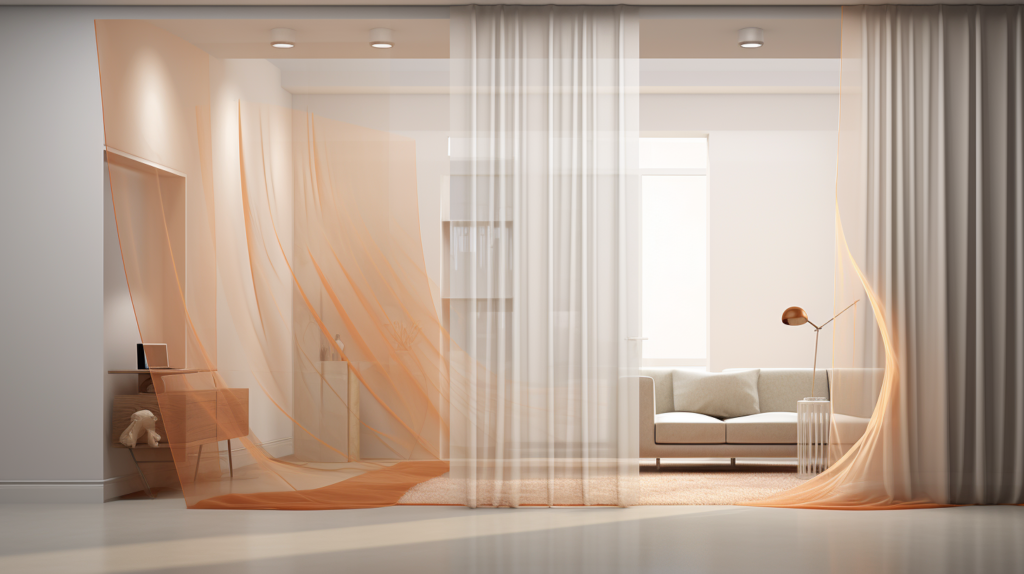
Soundproof curtains are a solution to the common problem of noise pollution that affects both residential and commercial spaces.
Unlike your everyday window treatments or decorative curtains, soundproof curtains are engineered with specific materials and designs that serve the primary function of reducing noise.
Essentially, these curtains act as a soft barrier between the outside world and your indoor environment, minimizing the penetration of unwanted sounds.
The sophistication behind the construction of soundproof curtains involves multiple layers of specialized fabric. Each layer helps to reduce the soundwaves that could pass through the curtain and reach you.
The density and arrangement of these layers are meticulously calculated to provide optimal sound reduction. Among the plethora of materials used, polyester acoustic curtains are particularly effective.
The structure of polyester fibers is well-suited for trapping sound waves, making it a popular choice for both commercial and residential soundproofing solutions.
Why Should You Consider Using Soundproof Curtains?

Soundproof curtains offer a plethora of benefits that go beyond mere aesthetics. Living in an urban or suburban area exposes you to a cacophony of sounds, from honking cars to noisy neighbors and everything in between.
This constant noise can be more than just an annoyance; it can impact your quality of life, affecting sleep, concentration, and even emotional well-being. Soundproof curtains serve as a first line of defense against this kind of auditory intrusion.
Seasonal considerations also make a strong case for the use of soundproof curtains. During the summer months, the indoor environment can become uncomfortably hot, prompting many to open their windows for ventilation.
While this solves one problem, it often creates another by allowing in external noise. Soundproof curtains provide a balanced solution by allowing you to keep your windows open while still mitigating the intrusion of unwanted sounds.
The cost-effectiveness of soundproof curtains cannot be overstated. Renovating your home to include soundproof windows or installing window inserts is a costly and labor-intensive endeavor.
In contrast, soundproof curtains offer a relatively inexpensive and easy-to-install alternative. For renters or those who cannot make permanent changes to their living space, soundproof curtains are an ideal solution.
How Effective Are Soundproof Curtains at Blocking Noise?
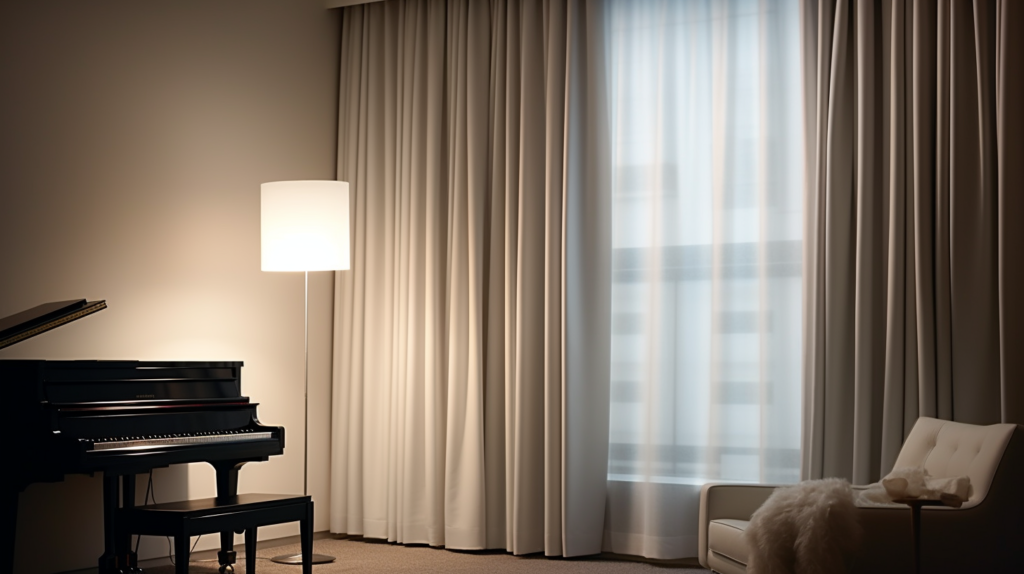
The efficacy of soundproof curtains in blocking noise is a subject of much interest and research. Generally speaking, these curtains are highly effective at mitigating airborne noise.
Airborne noise is sound that travels through the air and includes a wide range of common disturbances such as talking, music, and traffic noise. Soundproof curtains, with their specialized multi-layered design, are adept at absorbing these kinds of sounds.
However, it’s crucial to approach this with realistic expectations. No curtain can provide complete sound isolation.
The level of sound reduction you experience will be influenced by various factors including the quality of the curtain, how well it’s installed, and the type of noise you’re dealing with. For example, low-frequency sounds like the rumbling of a truck may not be fully absorbed.
Moreover, the overall effectiveness is also dependent on proper installation. Any gaps or spaces where the curtain doesn’t cover the window can serve as entry points for sound, reducing the curtain’s effectiveness.
Therefore, correct measurement and installation are vital for maximizing sound reduction.
What Should You Look for in a Soundproof Curtain?
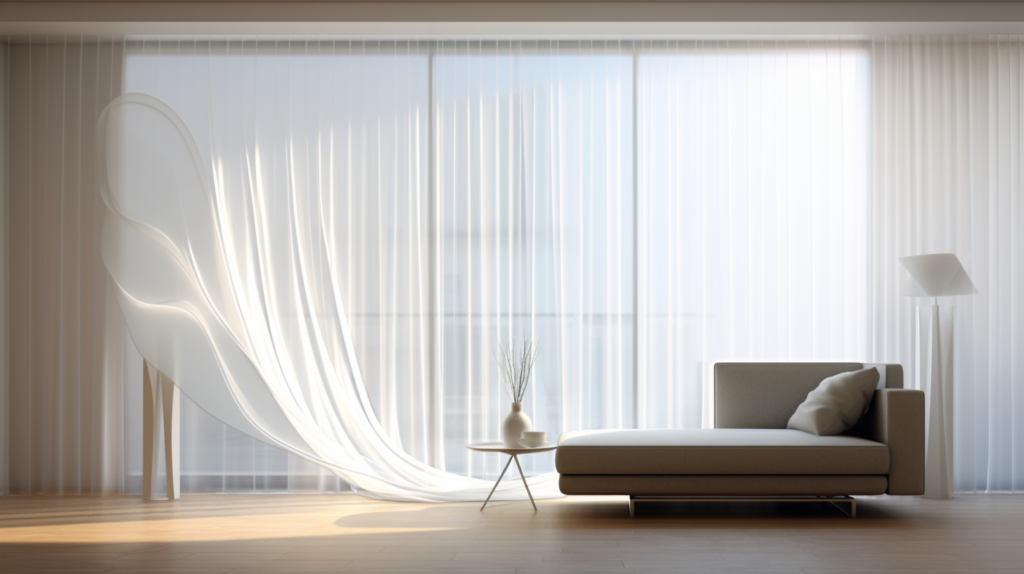
Choosing the right soundproof curtain is not as simple as picking out a regular decorative curtain; there are multiple technical aspects to consider. Fabric thickness and density are perhaps the most vital parameters in determining a curtain’s soundproofing abilities.
A good rule of thumb is to opt for curtains that are visibly thick and have a heavier weight. These properties directly correlate with the curtain’s ability to block out sound.
The dimensions of the curtain also play a significant role. A common mistake people make is choosing curtains that are too short or too narrow for their windows.
For maximum effectiveness, the curtain should be longer and wider than the window it’s covering. This ensures that the curtain creates a more comprehensive barrier against sound.
It’s advisable to measure your window dimensions accurately before making a purchase to avoid this pitfall.
Color is another factor that, surprisingly, can have an impact on a curtain’s soundproofing capabilities. It may seem counterintuitive, but darker colors often indicate a denser material that can absorb sound more effectively.
This is not a hard and fast rule, but it’s worth considering when making your selection.
What Types of Noises Can Soundproof Curtains Handle?

Understanding the types of noise that soundproof curtains can handle effectively is crucial for setting realistic expectations. Generally, soundproof curtains are most proficient at diminishing airborne noises.
These are the sounds that travel through the air, such as conversations, television sound, music, and vehicular traffic. If you live in a busy urban area, soundproof curtains can significantly lessen the intrusion of these kinds of noises into your living space.
However, soundproof curtains do have limitations, particularly when it comes to blocking out impact or structure-borne noises.
These are sounds that result from physical impacts, like footsteps or moving furniture, and structural vibrations, such as those from construction equipment or heavy machinery.
While soundproof curtains can dampen the intensity of these sounds, they are not capable of blocking them out entirely. Therefore, for such types of noise, more intensive soundproofing measures may be required.
What Metrics Should You Consider for Soundproof Curtains?
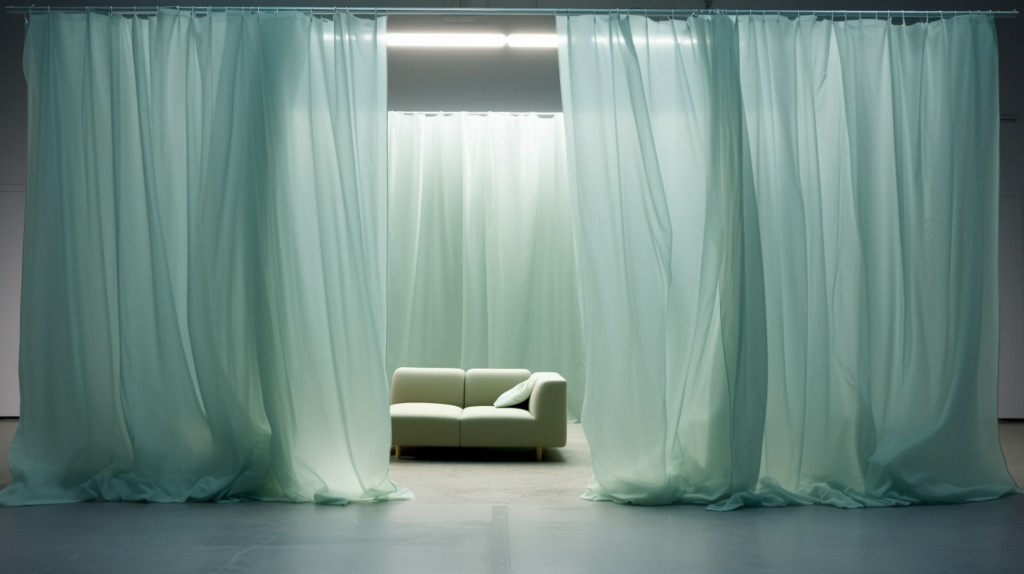
Metrics are invaluable tools for quantifying a curtain’s soundproofing capabilities. The Noise Reduction Coefficient (NRC) is a standard metric used widely in the industry. It ranges from 0 to 1, with higher values indicating better sound absorption.
An NRC of 0.5, for instance, means the material absorbs 50% of sound energy, reflecting the other half. This can be particularly useful for comparing different curtain options on the market.
In addition to NRC, the Sound Absorption Coefficient (SAC) is another metric that is often overlooked but equally important. SAC values provide an understanding of how well freely hanging materials, like curtains, absorb sound.
High SAC values are an indicator of a material’s ability to soak up sound waves effectively, making it a useful parameter for selecting soundproof curtains.
Since soundproof curtains are not really for soundproofing, then STC should not be of a larger concern.
How Do You Choose the Right Soundproof Curtains?
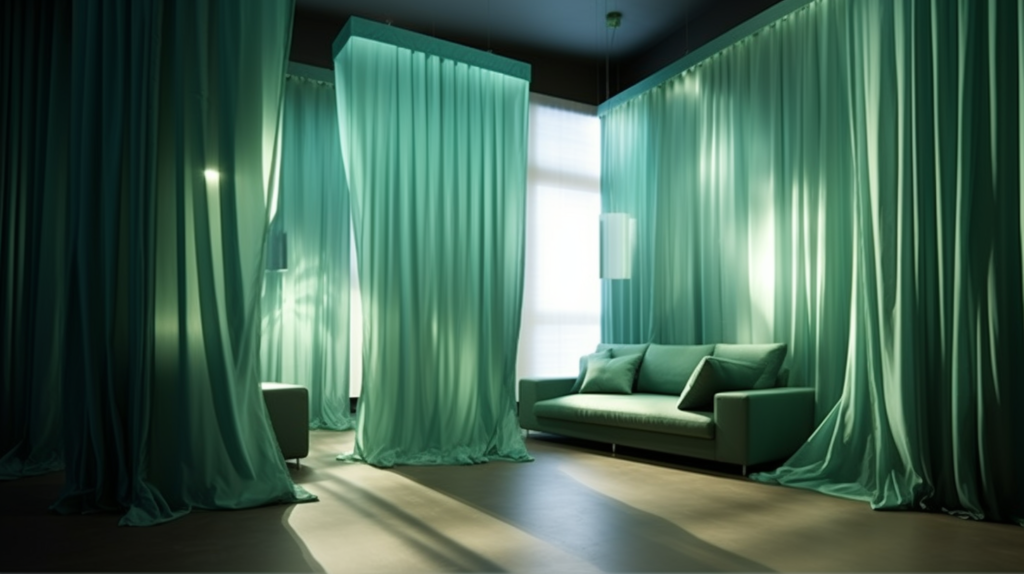
Selecting the right soundproof curtains involves a multi-faceted approach, encompassing considerations of material, weight, and dimensions. Material choice is crucial, and various options are available, such as velvet, vinyl, and polyester.
Polyester acoustic curtains are especially popular for their combination of affordability and sound-absorbing efficiency. The fabric’s unique structural properties make it ideal for trapping and minimizing sound waves.
Weight is another pivotal factor in the effectiveness of a soundproof curtain. Heavier curtains generally offer better sound absorption, so it’s recommended to opt for curtains with significant weight.
This can be easily checked in the product specifications or by feeling the material if you’re shopping in a physical store.
The dimensions of the curtain are equally critical. Curtains that are too small for the window will leave gaps, allowing sound to penetrate.
For maximum coverage, the width should be at least 1.5 to 2 times the width of the window, and the length should extend from the rod to the floor.
Brands and manufacturers also play a role in your decision-making. Companies specializing in acoustic solutions often produce high-quality soundproof curtains that meet or exceed industry standards.
Customer reviews and testimonials can provide additional perspectives on the effectiveness of a particular product.
What Are Some Installation Tips for Soundproof Curtains?

Installation is more than just hanging the curtains; it’s about maximizing their soundproofing capabilities. For the most effective sound barrier, the curtains should be hung as close to the window as possible.
This reduces the space where sound could leak in. Using a sturdy, heavy-duty curtain rod is essential, especially for heavier curtains.
A double rod setup can also enhance soundproofing by allowing you to hang an additional layer of curtains or a liner. This extra layer can provide additional mass, thereby improving the sound-blocking capabilities.
Curtain liners, specifically designed for soundproofing, can also be used to boost performance.
What Are the Pros and Cons of Using Soundproof Curtains?
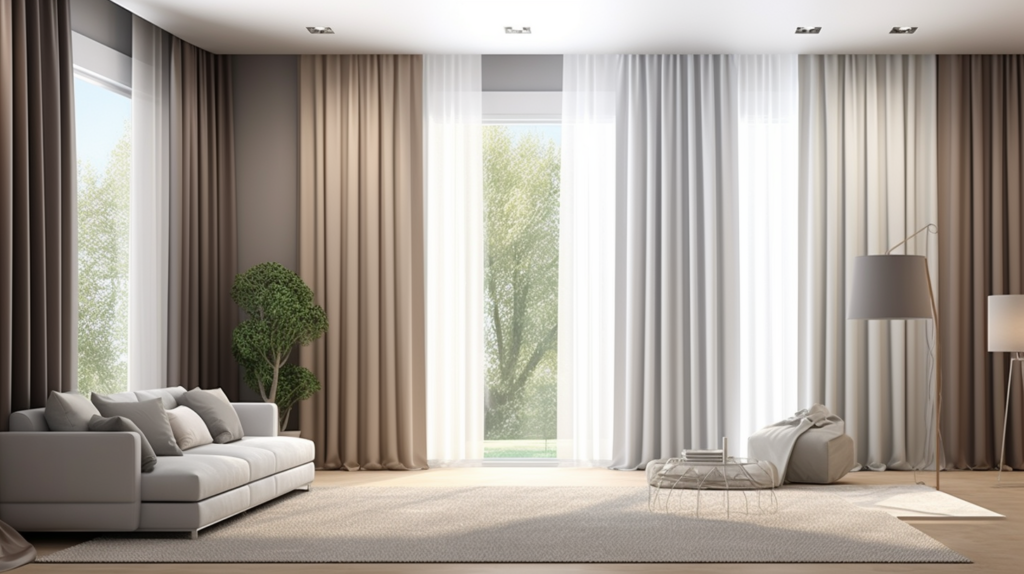
The advantages of using soundproof curtains are numerous. Most notably, they are cost-effective compared to other soundproofing methods like installing double-glazed windows or soundproofing the walls and ceiling.
This makes them accessible for a broad range of people, from renters to homeowners who may not want to invest in permanent structural changes.
However, they are not without limitations. While they can effectively reduce the level of airborne noise, they are not as adept at blocking out impact or structure-borne noises.
Also, their performance is highly dependent on proper installation. A poorly installed curtain will not provide optimal soundproofing and can even be counterproductive.
So, Do Soundproof Curtains Really Work?
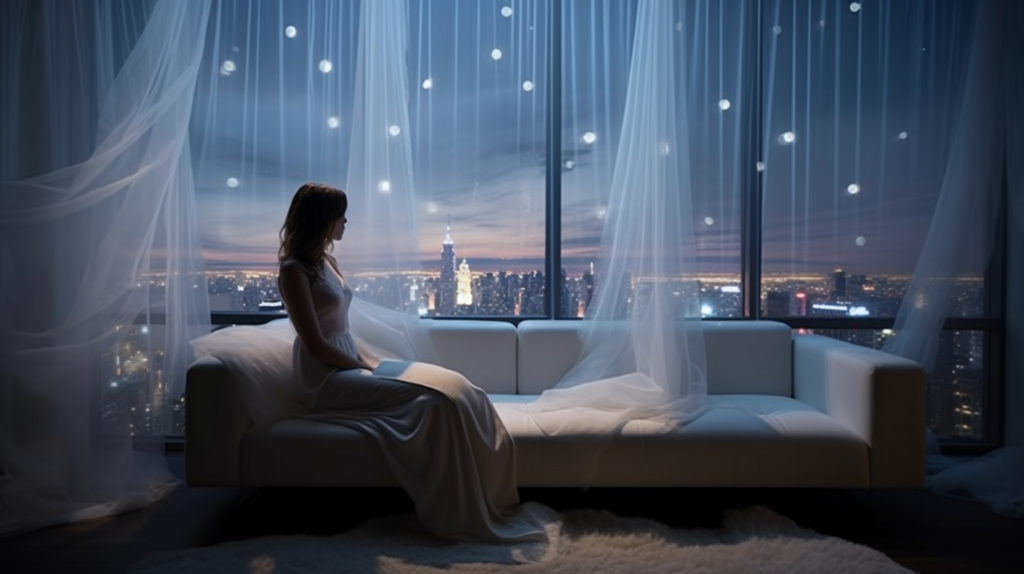
The short answer to this pressing question is yes, soundproof curtains do work, but with certain limitations. When properly selected and installed, soundproof curtains can significantly reduce the amount of airborne noise that enters a room.
This makes them particularly effective against common disturbances like street noise, loud conversations, and high-pitched sounds. Many users report a noticeable difference in ambient noise levels once they’ve installed soundproof curtains, affirming their effectiveness.
However, it’s crucial to have realistic expectations. While soundproof curtains are an effective barrier against many types of noise, they are not a cure-all.
They can’t entirely eliminate all sounds. For instance, low-frequency sounds like the rumbling of a truck engine are more challenging to block out.
The effectiveness of the curtain is also highly dependent on its material, thickness, and how well it has been installed.
Furthermore, soundproof curtains have limitations when it comes to structure-borne or impact noises. These are noises that result from physical impacts or vibrations in the building’s structure, such as construction work.
If the noise is being transmitted through the vibration of your building or house, soundproof curtains will have a limited effect. You’ll still feel the impact of such noises, albeit perhaps to a slightly lesser degree.
Therefore, while soundproof curtains are a valuable tool in your soundproofing arsenal, they are not a standalone solution for all noise problems.
They are most effective when used in conjunction with other soundproofing methods, or when the primary noise issue is airborne in nature.
Conclusion
In a world where noise pollution has become an increasingly pressing concern, soundproof curtains emerge as a practical, cost-effective solution for both residential and commercial spaces.
While not a panacea for all types of noise, these specially designed curtains excel at mitigating airborne sounds, offering a substantial reduction in everyday disturbances. When chosen and installed correctly, they can significantly improve the acoustic comfort of your environment.
However, it’s crucial to approach this soundproofing option with realistic expectations. Soundproof curtains have their limitations, particularly when it comes to blocking impact or structure-borne noises.
They serve as an effective first line of defense, but for comprehensive noise reduction, additional soundproofing measures may be required.
To maximize the effectiveness of your soundproof curtains, attention to details like material, weight, and dimensions is essential. Polyester acoustic curtains stand out as a particularly effective material, balancing affordability with high performance.
By carefully considering these factors and supplementing with other soundproofing methods as needed, you can create a quieter, more peaceful space to live or work in.
